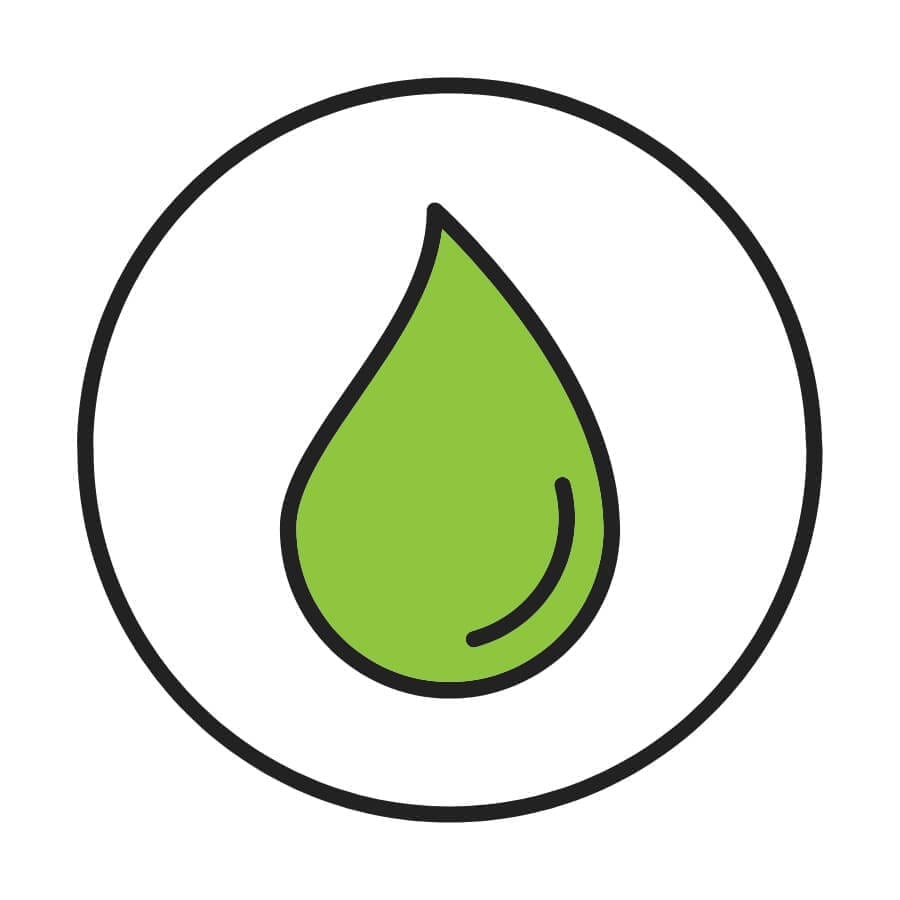Summer is around the corner, a season when many homeowners struggle to control indoor humidity levels. Is there an ideal indoor humidity range for summer? How can I reduce moisture and humidity to reach the ideal range? If you’re asking yourself these questions, stick around, because we’ve got the answers!
What Is Humidity?
Humidity refers to the amount of water vapor in the air. Water vapor is simply water in its gaseous state. When there is a small amount of water vapor in the air, humidity is low. When there is a large amount of water vapor in the air, humidity is high.
What Is the Ideal Indoor Humidity Range in the Summer?
There is a lot of talk about how low or high the indoor humidity level should be throughout the year. As a general rule of thumb, indoor humidity ideally falls between 40 and 60%. Why is this the ideal range? Well, this range ensures that your home is not too dry and not too humid. Studies show this mid-range minimizes threats associated with excessively dry or moist indoor environments.
What sorts of threats? When your home is too dry, you may experience bloody noses or dry skin. And, you may notice peeling wallpaper in your home. When your home is too humid, you may experience health effects like poor sleep quality. And, your home may suffer from mold growth.
 Ideal Indoor Humidity: If you’d like to learn more about the ideal 40 to 60% humidity range and what happens when your home is outside of this range, check out this article explaining low and high humidity levels →
Ideal Indoor Humidity: If you’d like to learn more about the ideal 40 to 60% humidity range and what happens when your home is outside of this range, check out this article explaining low and high humidity levels →Surely, this range cannot be ideal all year long, can it? Well, depending on the climate you live in there may be room for adjustment. On the high end, we do not recommend exceeding 60% humidity in any climate, especially during summer. High humidity levels encourage the growth of mold, mildew and fungi.
On the low end, however, it may be necessary to maintain below 40% humidity under certain circumstances. This is particularly dependent on climate and local weather conditions. For example, a scorching summer in Texas with 80% humidity outside may make maintaining an indoor humidity level of 35% the achievable goal. The lesson here is to create the most comfortable and healthy indoor atmosphere possible based on the weather report.
How To Reduce Humidity in Your House During Summer
1. Use A Whole-Home Dehumidifier
Perhaps the most obvious solution is a whole-home dehumidifier. They reduce humidity throughout the entire house, efficiently and effectively. In addition to creating a more comfortable atmosphere, they deter mold, mildew and fungi growth. These air pollutants thrive in damp, humid environments. Yuck!
2. Air Conditioning’s Helpful Byproduct
While an air conditioner’s primary purpose is not to dehumidify, it does have dehumidification properties. Your home HVAC system has an evaporator coil and a drain pan. When you turn on your air conditioner, warm air moves over the evaporator coil which collects moisture. The drain pan removes the moisture collected by the evaporator coil. And you are left with cool, drier air.
 AC vs. Dehumidifier: Dehumidification may be a helpful byproduct of air conditioning, but it’s not recommended to rely solely on AC to control indoor moisture. Here’s why dedicated humidity control systems are better →
AC vs. Dehumidifier: Dehumidification may be a helpful byproduct of air conditioning, but it’s not recommended to rely solely on AC to control indoor moisture. Here’s why dedicated humidity control systems are better →3. Utilize Exhaust Fans
Exhaust fans, such as those found in bathrooms and kitchens, provide spot ventilation. In other words, localized mechanical ventilation! While they do not reduce humidity throughout the entire home, they do reduce humidity where it is most necessary. Activities such as showering and cooking increase humidity in bathrooms and kitchens. This increases the overall humidity level in your home, creating an uncomfortable atmosphere. Using spot ventilation to reduce the humidity produced by these activities will keep you and your family comfortable.
4. Discontinue Humidifier Use
This recommendation should speak for itself. If you have a whole-home humidifier or portable humidifier, discontinue use until outdoor humidity levels are lower. Humidifiers have one job, and one job only: increase humidity. Thus, they are generally counterproductive during the summer season.
Take Control of High Humidity This Summer
There is nothing worse than feeling sweaty and sticky in your own home. Unfortunately, this is common during summer. When humidity increases outside, it also increases inside. Fortunately, there are several ways to combat high humidity during summer so that you can achieve the ideal indoor humidity range. Let’s take control of excess moisture and uncomfortable indoor humidity this summer!




